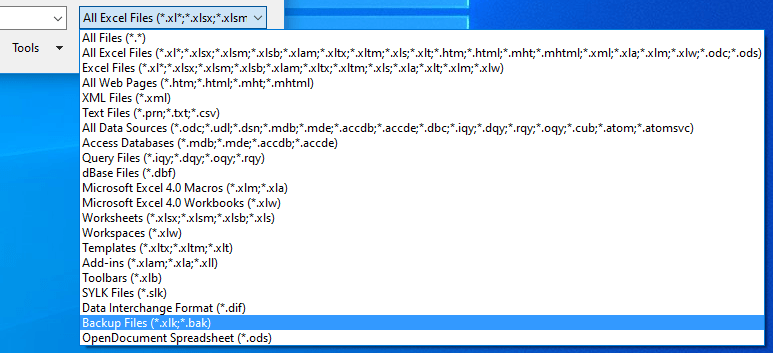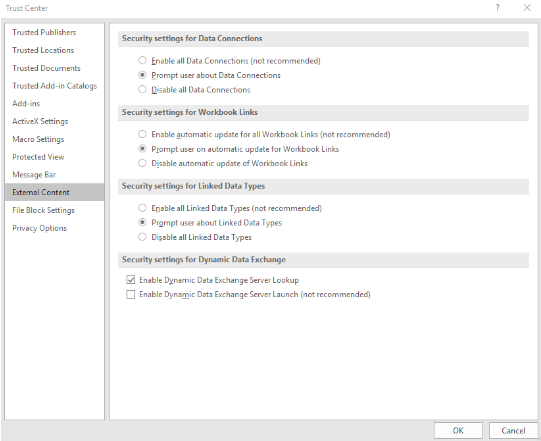Unknown Facts About Excel Links Not Working
Wiki Article
Excel Links Not Working Can Be Fun For Everyone
Table of ContentsLittle Known Facts About Excel Links Not Working.See This Report on Excel Links Not WorkingGet This Report on Excel Links Not WorkingNot known Facts About Excel Links Not WorkingNot known Factual Statements About Excel Links Not Working

However, variety calculation features like either can not deal with whole column recommendations or determine all the cells in the column. User-defined features do not immediately recognize the last-used row in the column and also, therefore, regularly determine entire column referrals inefficiently. It is easy to program user-defined features so that they identify the last-used row.

The Ultimate Guide To Excel Links Not Working
Utilizing the formula for a vibrant range is typically more suitable to the formula due to the fact that has the disadvantage of being an unstable function that will certainly be computed at every recalculation. Performance reduces since the feature inside the dynamic variety formula must take a look at lots of rows. You can lessen this efficiency decrease by storing the part of the formula in a different cell or specified name, and after that describing the cell or name in the dynamic array: Counts!z1=COUNTA(Sheet1!$A:$A) Offset, Dynamic, Variety=OFFSET(Sheet1!$A$ 1,0,0, Counts!$Z$ 1,1) Index, Dynamic, Range=Sheet1!$A$ 1: INDEX(Sheet1!$A:$A, Counts!$Z$ 1+ROW(Sheet1!$A$ 1) - 1,1) You can likewise use features such as to construct vibrant ranges, however is volatile and also constantly calculates single-threaded.
Using numerous vibrant varieties within a single column needs special-purpose counting features. Making use of several dynamic varieties can lower performance. In Office 365 variation 1809 and also later on, Excel's VLOOKUP, HLOOKUP, and MATCH for precise suit on unsorted data is much faster than in the past when looking up numerous columns (or rows with HLOOKUP) from the very same table array.
If you make use of the specific suit option, the estimation time for the feature is symmetrical to the number of cells scanned before a match is found. Lookup time using the approximate suit options of,, and also on sorted information is fast and also is not dramatically increased by the length of the variety you are looking up.
Excel Links Not Working Fundamentals Explained
Make sure that you understand the match-type and range-lookup choices in,, as well as. The adhering to code example shows the phrase structure for the feature. To learn more, see the Suit approach of the Worksheet, Feature item. SUIT(lookup worth, lookup variety, matchtype) returns important source the biggest match less than or equal to the lookup value when the lookup range is sorted ascending (approximate match) (excel links not working).The default option is approximate suit arranged rising. requests an exact suit and also assumes that the information is not arranged. returns the smallest match more than or equivalent to the lookup value if the lookup selection is arranged coming down (approximate suit). The adhering to code instance shows the phrase structure for the as well as functions.
VLOOKUP(lookup value, table range, col index num, range-lookup) HLOOKUP(lookup worth, table range, row index num, range-lookup) returns the largest suit less than or equal to the lookup worth (approximate suit). This is the default option. Table range should be sorted rising. demands a specific match and also presumes the data is not arranged.
The 9-Minute Rule for Excel Links Not Working
If your information is sorted, however you want a specific match, see Use two lookups for sorted information with missing worths. Attempt utilizing the as well as operates as opposed to. Although is somewhat much faster (approximately 5 percent quicker), less complex, and uses much less memory than a mix of and also, or, the additional flexibility that and deal typically enables you to substantially save time.
The function is fast and also is a non-volatile function, which speeds up recalculation. The function is also quickly; nonetheless, it is an unstable function, and it occasionally substantially boosts the time taken to process the estimation chain.$A$ 2:$F$ 1000, SUIT(A1,$A$ 1:$A$ 1000,0),3) Due to the fact that precise match lookups can be slow-moving, take into consideration the adhering to alternatives for enhancing performance: Make use of one worksheet.
When you can, the data initially (is discover this quick), as well as use approximate suit. When you need to make use of a precise match lookup, limit the series of cells to be scanned to a minimum. Usage tables as well as structured referrals or vibrant variety names instead of describing a huge number of rows or columns.
Excel Links Not Working - Questions
2 approximate suits are substantially faster than one exact match for a lookup over more than a few rows. (The breakeven factor is about 10-20 rows.) If you can sort your data but still can not use approximate match since go to the website you can not make sure that the value you are searching for exists in the lookup array, you can utilize this formula: IF(VLOOKUP(lookup_val, lookup_array,1, True)=lookup_val, _ VLOOKUP(lookup_val, lookup_array, column, True), "notexist") The first part of the formula functions by doing an approximate lookup on the lookup column itself.VLOOKUP(lookup_val, lookup_array, column, True) If the answer from the lookup column did not match the lookup value, you have an absent worth, and the formula returns "notexist". Be aware that if you search for a value smaller than the tiniest worth in the list, you get a mistake. You can manage this error by making use of, or by adding a little test worth to the checklist.
Starting with Excel 2007, you can use the feature, which is both straightforward and also rapid. IF IFERROR(VLOOKUP(lookupval, table, 2 FALSE),0) In earlier variations, a basic however slow-moving means is to use a function that contains two lookups. IF(ISNA(VLOOKUP(lookupval, table,2, FALSE)),0, _ VLOOKUP(lookupval, table,2, FALSE)) You can stay clear of the dual specific lookup if you utilize specific once, save the cause a cell, and then evaluate the result before doing an.
Report this wiki page